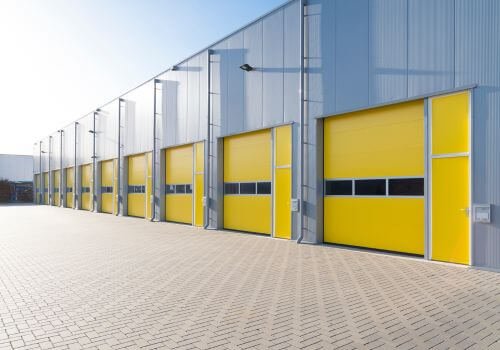In today’s fast-paced business world, efficiency and cost-effectiveness are key to success. One strategy that has proven to be incredibly valuable for many industries is the Just in Time (JIT) delivery system. This approach focuses on receiving goods and materials exactly when they are needed, rather than storing large amounts of inventory.
Let’s explore the top 10 industries that are benefiting the most from this innovative approach.
1. Automotive industry
The automotive industry has long been a pioneer in JIT delivery systems. Car manufacturers use this method to great effect, ordering parts only when they are needed for production. This approach helps them save money on storage and reduces the risk of having outdated parts.
For example, when a customer orders a specific car model, the manufacturer only orders the necessary parts from suppliers. This way, they don’t have to keep a large inventory of parts for different models. It also allows them to quickly adapt to changes in customer preferences or new car designs.
By using JIT, car companies can make their production process more flexible and responsive to market demands. They can also reduce waste and improve the quality of their products, as they can quickly identify and fix any issues with parts.
Real-world automotive businesses that utilize JIT include:
- Toyota: Pioneered the JIT concept as part of the Toyota Production System, becoming a global benchmark for efficiency and lean manufacturing.
- Nissan: Applies JIT principles to optimize inventory management and production efficiency, enhancing its global competitiveness.
- Harley-Davidson: Implemented JIT to streamline operations, reduce costs, and improve flexibility in manufacturing processes.
2. Electronics manufacturing
The electronics industry moves at a lightning-fast pace, with new technologies emerging all the time. JIT delivery systems help electronics manufacturers stay agile and competitive in this rapidly changing market.
By using JIT, electronics companies can avoid the risk of their components becoming outdated before they’re used. They can also respond quickly to changes in consumer demand, producing popular items in larger quantities without overstocking less popular ones.
This approach is particularly useful for companies that make smartphones, computers, and other gadgets that are constantly being updated. It allows them to introduce new models quickly and efficiently, without wasting resources on outdated technology.
Real-world electronics manufacturing businesses utilizing JIT include:
- Dell: Utilizes JIT to manage inventory and production, customizing computers based on customer orders and minimizing warehouse storage.
- Apple: Employs JIT in its supply chain to manage the production of its devices, ensuring timely delivery of components and products.
- Samsung Electronics: Implements JIT to manage component supplies for its electronics manufacturing, reducing lead times and inventory costs.
3. Fashion and apparel
The fashion industry is known for its rapidly changing trends. JIT delivery systems help clothing retailers keep up with these changes without wasting money on unsold inventory.
Fashion brands can use JIT to quickly produce and deliver new styles based on current trends. This allows them to offer customers the latest fashions without the risk of having too much stock that might go out of style.
For example, if a certain type of dress becomes popular, a retailer using JIT can quickly order more from their suppliers. This helps them meet customer demand without overstocking their warehouses with clothes that might not sell.
Real-world fashion & apparel businesses utilizing JIT include:
- Zara: Operates a JIT system in its supply chain to quickly move designs from concept to store shelves, keeping inventory levels low and responding swiftly to fashion trends.
- H&M: Uses JIT to align production with customer demand, allowing for quicker response to fashion trends and greater customization capabilities.
- Alohas: Utilizes an on-demand business model to predict inventory needs and create less waste, rewarding customers who order new items weeks in advance with lower pricing.
4. Food and beverage industry
Freshness is crucial in the food and beverage industry. JIT delivery systems help restaurants, cafes, and food manufacturers ensure that their ingredients are as fresh as possible.
By ordering ingredients only when they’re needed, food businesses can reduce waste from spoiled food. This is especially important for businesses that deal with perishable items like fruits, vegetables, and dairy products.
JIT also helps food businesses adapt quickly to changes in customer preferences. If a certain dish becomes popular, they can quickly order more of the necessary ingredients without worrying about excess inventory.
Real-world food & beverage businesses utilizing JIT include:
- McDonald's: Uses a form of JIT in its kitchens, preparing food as orders are placed to ensure freshness and reduce waste.
- Kellogg Company: Stores only enough inventory to meet customer orders, using JIT to improve efficiency and reduce waste.
- Starbucks: Implements JIT principles in its coffee shops to maintain freshness and reduce inventory costs.
5. Retail
In the retail industry, JIT delivery systems help stores manage their inventory more effectively. This is particularly useful for businesses that sell a wide range of products.
Retailers can use JIT to keep their shelves stocked with popular items without overfilling their warehouses. This helps them save money on storage costs and reduces the risk of having unsold products.
For example, during holiday seasons, retailers can use JIT to stock up on popular gift items. After the holidays, they can quickly adjust their inventory to normal levels without being left with excess stock.
Real-world retail businesses utilizing JIT include:
- Walmart: Schedules the arrival of merchandise based on forecasting and past experience, using JIT principles to manage seasonal and high-demand items.
- Target: Employs JIT for certain product categories, particularly those with shorter shelf lives like holiday items.
- Amazon: Uses a variation of JIT by setting up dedicated space inside key suppliers' warehouses, optimizing inventory management and delivery times.
6. Healthcare
In the healthcare industry, JIT delivery systems can literally be a lifesaver. Hospitals and clinics can use this approach to ensure they always have the necessary medical supplies and medications on hand, without wasting resources on excess inventory.
JIT is particularly useful for managing expensive medical equipment and drugs with short shelf lives. It helps healthcare providers reduce waste and ensure that patients always have access to the treatments they need.
This system also helps healthcare facilities quickly respond to emergencies or outbreaks. They can quickly order additional supplies when needed, without having to maintain large, costly inventories at all times.
Real-world healthcare businesses utilizing JIT include:
- Hospital Corporation of America (HCA): Implements JIT inventory management to reduce costs and improve efficiency in its network of hospitals.
- Cleveland Clinic: Utilizes JIT principles to manage medical supplies and reduce waste in its healthcare operations.
- Kaiser Permanente: Adopts JIT strategies to streamline its supply chain and improve patient care delivery.
7. Construction
The construction industry deals with large, expensive materials and equipment. JIT delivery systems help construction companies manage these resources more effectively.
By using JIT, construction firms can order materials only when they’re needed for specific projects. This reduces the need for large storage areas and minimizes the risk of materials being damaged or stolen while in storage.
JIT also helps construction companies adapt to changes in project plans. If a client requests a change, the company can quickly adjust their material orders without wasting resources.
Real-world construction businesses utilizing JIT include:
- Skanska: Applies JIT principles in construction projects to reduce on-site inventory and improve project efficiency.
- Bechtel: Utilizes JIT in large-scale construction projects to minimize storage needs and optimize material flow.
- Laing O'Rourke: Implements JIT strategies in its construction operations to reduce waste and improve project timelines.
8. Publishing
In the publishing industry, JIT systems have revolutionized the way books are produced and distributed. This is especially true for print-on-demand services.
Publishers can use JIT to print books only when they’re ordered, rather than printing large quantities in advance. This reduces the risk of having unsold books and allows publishers to offer a wider range of titles without the need for large warehouses.
For example, a small publisher can offer hundreds or even thousands of titles, printing each book only when a customer orders it. This allows them to compete with larger publishers without the need for massive upfront investments in inventory.
Real-world publishing businesses utilizing JIT include:
- Lulu.com: Operates an on-demand publishing model, printing books only when orders are placed, exemplifying JIT principles in publishing.
- Amazon's Kindle Direct Publishing: Utilizes a print-on-demand system for physical books, aligning with JIT inventory management.
- IngramSpark: Offers print-on-demand services for publishers and authors, embodying JIT principles in book production and distribution.
9. Aerospace
The aerospace industry deals with complex, expensive components. JIT delivery systems help aerospace companies manage these components more effectively.
By using JIT, aerospace manufacturers can reduce the amount of inventory they need to keep on hand. This is particularly important given the high cost and specialized nature of aerospace components.
JIT also helps aerospace companies maintain the quality of their components. By ordering parts only when they’re needed, companies can ensure that components don’t degrade while sitting in storage for long periods.
Real-world aerospace businesses utilizing JIT include:
- Boeing: Applies JIT methodologies in the production of aircraft, coordinating the delivery of parts to align with assembly schedules to reduce inventory storage.
- Airbus: Implements JIT principles in its aircraft manufacturing processes to optimize production efficiency and reduce costs.
- Lockheed Martin: Utilizes JIT strategies in its aerospace manufacturing to improve supply chain efficiency and reduce inventory holding costs.
10. Technology services
In the technology services industry, JIT principles are applied to manage digital resources and services. Cloud computing providers, for instance, use JIT-like systems to allocate computing resources to users on demand.
This approach allows tech companies to provide scalable services without wasting resources. Users can access exactly the amount of computing power or storage they need, when they need it.
For example, a website hosting company can use JIT principles to allocate server resources based on traffic. During peak times, more resources are allocated, while during quiet periods, fewer resources are used. This ensures efficient use of resources and cost-effective service delivery.
Real-world technology service businesses utilizing JIT include:
- IBM: Applies JIT principles in its service delivery model to optimize resource allocation and improve customer responsiveness.
- Accenture: Utilizes JIT concepts in project management and resource allocation to enhance efficiency in service delivery.
- Cisco Systems: Implements JIT strategies in its supply chain and service operations to improve agility and reduce costs.
Conclusion
As we look to 2025, it’s clear that Just in Time delivery systems are becoming increasingly important across a wide range of industries. From automotive manufacturing to technology services, businesses are finding that JIT approaches help them stay competitive, reduce costs, and improve efficiency.
The benefits of JIT are numerous:
- Lower inventory costs
- Reduced waste
- Improved cash flow
- Faster response to market changes
- Enhanced product quality
- Increased customer satisfaction
However, it’s important to note that implementing a JIT system requires careful planning and strong relationships with suppliers. Companies need to have reliable forecasting methods and be prepared to handle potential disruptions in the supply chain.
Despite these challenges, the advantages of JIT delivery systems are clear. As technology continues to advance and global markets become increasingly competitive, we can expect to see even more industries adopting JIT principles in the coming years.











